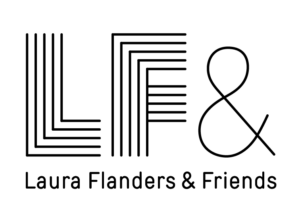To download, please subscribe. To download a single episode, click share in the podcast player below.
A special thanks to our Patreon community for supporting us through this difficult time and making it possible to keep this content free for everyone.
TómateloEnSerioMX is the hashtag under which journalists in Mexico have come together not only to protect themselves, but to stop the spread of misinformation in a country that is gearing up the fight against Covid-19. More than 80 Mexican media outlets, organizations and universities have organized under #TómateloEnSerioMx to unify their public health message, and they are focusing especially on women and other vulnerable people. Against all the odds, Jordy Meléndez Yúdico, María José Evia and Irasema Pineda Ramirez are experimenting with a new collaborative media model with lessons for US journalism. From the homeland of media magnate Carlos Slim, a story of how bigger may not be better and how collaboration can save lives.
Click here to see videos from our Forward Thinking on Covid-19 series.
“In the midst of this catastrophe our imaginations have been unshackled and I think it’s time for us to kind of be bold and what we envision the country to be.”
Guests:
- Jordy Melendez Yudico, Journalist at Distintas Latitudes
- María José Evia, Journalist and editor at Malvestida
- Irasema Pineda Ramírez, Editor at Chilango.com
Transcript
Jordy: So we’re not exactly generating news coverage of what’s going on with COVID-19, but rather we’re uniting to create useful messages and services, journalism that impacts our communities.
Maria: Many women we’re going to be in lockdown with their abusers. And it was very important for us to use Tomatelo EnSerio to spread this message.
Jordy: We absolutely believe that creating communities and networks between media outlets and independent journalists is one of the best ways to confront the current media crisis.
Laura: It’s all coming up on the Laura Flanders Show, the place where the people who say it, can’t be done take a back seat to the people who are doing it. Welcome.
Even before COVID-19 hit. Mexico was one of the most dangerous places in the world to be a journalist, that’s according to the committee to protect journalists. Now, as the country’s bracing for the pandemic media outlets across Mexico, some large, many small cooperating on media messaging around public health and violence against women. Many of them are part of an initiative, a campaign under the hashtag Tomatelo EnSerio or take it seriously. It’s not just about COVID-19. It’s also about protecting and strengthening an independent media sector just when the country needs it most.
Joining me today from Mexico City right now are Jordy Melendez of Factual. Irasema Pineda Ramirez from Chilango And Maria Jose Evia from Malvestida. They’re going to talk about what they are doing as part of this initiative, and also perhaps what the US can learn from their experience. All of you, thanks for joining us. Glad we can have you. Jordy let me start with you. You’re the co-director of Factual, which leads a number of initiatives, not just Tomatelo EnSerio, but also Distinctas Latitudes. How do you distinguish what you are doing from what mainstream media is doing in Mexico?
Jordy: Thank you very much. Laura. I’m Jordy Melendez. I’m the director of an NGO called Factual, which has various projects. One of them is Distinctas Latitudes is an information platform for young people from all over Latin America. For years, we’ve been putting on different events, workshops, conferences, and gatherings between media outlets and journalists throughout the region. We absolutely believe that creating communities and networks between media outlets and independent journalists is one of the best ways to confront the current media crisis. Yes, workshops, gatherings, forums of journalists and media outlets.
Laura: Why do you need to collaborate as independent journalists, Jordy? Aren’t the mainstream media, the big commercial media doing a good enough job?
Jordy: Yes, Mexico is a very big country with an enormous amount of media outlets. Some of which have a lot of power. In Mexico there is an economic crisis in the media, as well as a security crisis for journalists. This is something we’ve seen for years in our country. So the idea of creating unity within the independent media is a way to deal with different crises.
Laura: You said that journalists face an economic crisis and a safety crisis. Before we move on, you’re talking about a safety crisis, a crisis even before COVID-19. What was the nature of that crisis?
Jordy: Part of the risks that many journalists in Mexico face has to do with the lack of security in dealing with their own governments. Governments are a force that scares, intimidates and even does physical harm to many local journalists. On the other hand, there’s a crisis of violence around drug trafficking and organized crime, which has led to the assassination of a number of journalists because of the work that they published me. And unfortunately, Mexico has a very high inequality index. In the past 10 years, out of more than 100 journalists, assassinations in Mexico, very few of the cases have resulted in a sentencing or been resolved.
Laura: So finally, to add the COVID 19 epidemic to that situation means what for the people that you work with? How is their situation on top of all that now different?
Jordy: Since the outbreak of the novel Corona virus and the health crisis, Mexico, Mike, the rest of the world has to have to deal with another problem, misinformation, that and overload of information. So we have a government that is trying to establish containment measures, but there is so much misinformation out there about how to handle this health crisis. This is what led to the founding of Tomatelo EnSerio as an initiative to join and bring together different media outlets, digital and local outlets from all over the country to try to turn up the volume on certain messages and opinions and improve the health and security of people of all sorts. We’re talking about women, we’re talking about migrants, we’re talking about older adults. We’re talking about children. We’re talking about people with depression. How do we take care of each other? What are the different guidance and support measures needed for these different groups? This is what we’re doing with this initiative. Tomatelo EnSerio, which has gotten more than 80 media outlets and universities from all over the country involved.
Laura: Thank you, Jordy. Maria Jose Evia, you are at Malvestida, which as I understand it as an outlet, mostly focused on the interests of women and girls and has been very strong in addressing this question of violence against women. Why was it important for you to join this collaboration Tomatelo EnSerio? What does it do for you? Why was it needed for you?
Maria: Hi, thank you very much. Yes, Malvestida is an online platform for young women, mostly not only in Mexico, but we are read all over Latin America and Spain. For us, the topic of violence against women is central to what we do. Faced with the COVID 19 emergency, we saw that the government waited a long time before talking about violence against women, even though we knew that in the current situation, many women were going to be in lockdown with their abusers. It was very important for us to use Tomatelo EnSerio to spread this message, not only to our audience of young women, but to many of the audiences that we don’t normally have so much access to.
Laura: And what does being part of the network enable you to do that you might not have been able to do on your own Maria Jose?
Maria: What this enables us to do is to which other people that since most of our readers are, are feminist young feminists, they know about violence against women, but we wanted to reach people and to have a that’s strong and concise message about what can women do if they’re in this situation. And also if they have friends who are in a violent situation and how can they protect themselves. That was super important to us to have this more than 80 platforms across the country talking about this, that is something that must be most media doesn’t talk about or they talk about it in a different way. we thought that we have access to this information and we wanted other people to have it too.
Laura: Irasema, the same as same question to you. Tell us a little bit about what focuses on and how does this collaboration help you?
Irasema: Chilango is a city guide. We aspire to be a sort of hybrid between the New Yorker and Time Out. We talk a lot about what’s happening in the city, about going out and doing things, about how to enjoy our city. we also have an important section with in depth reports about topics that are of interest to Chilangos, which is what we call people who live in Mexico city. In terms of this effort that Jordy invited us to join Tomatelo EnSerio Mexico, well, first it was great for us as a brand because we’re currently trying to stand out in the area of . We’re trying to get Chilango’s Voice, which has an audience of around 12 million people every month on different platforms as a way to serve the citizens. This initiative gave us an opportunity to be perceived not only as the city guide, that talks about what to do in Mexico City, but also as a serious media outlet, that aims to be more rigorous with his investigations, an outlet that, during this global health crisis aims to have a voice that can serve as a source of accurate information and also as a guide that brings about initiatives that can eventually help to reactivate the economy in Mexico City.
Laura: Jordy, one of your international initiatives for journalists is turbulent America. Can you tell us about the kind of resources you’re making available through that series?
Jordy: Turbulent America is a workshop that we developed last year in 2019. We invited journalists from all over the region from national and international media outlets, , the New York Times, migration specialists, economic specialists to generate conversation and provide training for journalists from Mexico and around the world on the most complex topics that Latin America is currently facing. Turbulent America was an incredible experiment because journalists and students attended in person, but we also had students online who were doing the trainings in real time from 13 different countries. So with this new pandemic, we may do a second Turbulent America in a few months.
Laura: You have a workshop training coming up for science reporters for people reporting on COVID-19 specifically. What can you tell us about that?
Jordy: We’ve just launched the Virtual Hispanic American Forum for Scientific Journalism. That’s hashtag COVID-19. It’s a forum in cooperation with all the scientific journalism networks in Latin America and Spain to have discussions and get training in the most important topics around COVID-19 in terms of health scientific journalism and environmental journalism. We’re very happy with this joint effort. The completely virtual forum will be held on the sixth and seventh of May. We also welcome journalists in the US who want to participate and join the forum.
Laura: Mexico is now entering what they’re calling phase three of this epidemic. And I’m imagining these are frightening times. I’d love you to speak to that, but also it seems to me as if there’s a possibility you could emerge and your network could emerge stronger after this, even than you are now. So without diminishing the tragedy and the challenge of this moment, I’d love you to talk about what you see in the future and what model of a healthy, independent media network might look like, I don’t know, a year from now.
Maria: From the beginning in Malvestida, we decided that our role was to create community where we have a very strong community of readers. We usually do a lot of in person events and since we can do it right now, we are using technology as best as we can to be in constant communication with our readers and to help them with anxiety with uncertainty. Actually Tomatelo EnSerio is key to this because we not only can share our information, but we can access information from other really great journalists. I think that’s also the future, still finding ways to be together and also to … since before this, we didn’t actually publish that many articles about the day’s news. We are strengthening our muscles in this area and we’re happy to have like a WhatsApp group where I can be like, “Hey, what do you think about this? Am I doing this right?” Because we were more of a lifestyle and activism media, but right now we think, well, we have to give verified great information for our readers.
We’re trying to … I think for the future is that we can do more reported pieces and in depth pieces and also hearing from different women. We don’t want to be a magazine that only worries about urban young women who have a job. We want to talk about migrants. We want to talk about, stay at home mothers. We want to talk about held workers. I I hope we can continue working together, sharing sources, a lot of stuff like that, because I mean, women still have to live their lives through this and after this. We want to help them do it as best as we can and we went to continue being, a magazine that has really strong relationships with our readers.
Irasema: As you said, Laura, we began phase three yesterday and they have announced some very strict measures for the city and the adjacent states. I also think that in the midst of everything, we’ve been able to report on some very inspiring initiatives by people who are looking to help doctors and nurses. We have also been reporting about measures to support restaurant because they’re suffering a lot right now. Specifically at Chilango, we have a few initiatives to help out small businesses and take advantage of the fact that despite everything there is a spirit of optimism, the feeling that we can come out of this pandemic stronger as a city and as a society.
In terms of the future of the media, like Jordy said at the beginning, Mexico has had at least two years of problems in the content industry. During this pandemic, we’ve had more than 50,000 layoffs in Mexico city, not just in the media, but in all industries, but in particular, there have been a lot of print closures in small and not too small media out. Salaries have been reduced. I think that the key point, and this is why I like what Jordy does with Factual and Distinctas Latitudes is that they’re establishing alliances. Because in the end, no outlet has the resources that they might need to cover all of the things that interested them.
So I think in the future, in order to survive, to come out of the crisis that has been carrying on and will continue after the pandemic, we have to make connections and take advantage of media, cover similar topics and establish these alliances and strengthening smaller local media outlets. That’s really the only way out that I see, because in reality, the crisis in Mexico is severe.
Laura: Jordy, listening to all of this, I see you smiling and nodding. I mean, this is how you wanted this collaboration to work, right? What makes you happy about it? In these difficult times, what are you particularly proud of to have reported or to have amplified?
Jordy: Yes of course it’s something that I’m very pleased with. In other countries there has been a level of collaboration among traditional media outlets in an easier, faster, and more organic way and in Mexico, that just wasn’t happening yet. So being able to push back and plant the seeds for media outlets in Mexico to put aside competition and try to unite our messages so they can reach different audiences is something that makes me particularly happy. I’m really glad that such different media sources like Chilango, which is a local guide, platform such as Malvestida, which is incredible and reaches so many young urban women and local, or even hyper-local print media have come together. But also media in the North of the country, in Sinaloa, in Guadalajara, in Zacatecas, Universities, organizations of LGBTQ collectives of single mothers, all these groups have come together.
So we’re not exactly generating news coverage of what’s going on with COVID-19, but rather we’re uniting to create useful messages and services. We’re creating service oriented journalism that impacts our communities.
Laura: It’s very interesting to listen to all of you because in the US our model of effective powerful media is to get very, very big in one spot, a lot of resources in one office, in one network and very little coverage of the rest of the country or the world. So in a moment like this, we have a lot of reporting from New York, and we have very little sense of what’s happening even in a town like where I am, which is just two hours away.
What I’m hearing from you is that you have many small outlets in very local or even hyper local areas who normally, perhaps couldn’t reach even the next door audience, but through this collaboration are really combining, as we say, to make the sum greater than the parts. But often we see in a crisis that people come together and they volunteer and they collaborate, and they can keep that up for a certain amount of time. But your networks have been around for a while, your collaborations. How does the financing work? How does this collaboration make each of your organizations stronger? And how many in your network are running on volunteer stuff, and effort?
Jordy: That’s an excellent question. Because as you said, in moments of crisis, like we had with the earthquake in September, 2017, there’s chaos and people are willing to come out and help and use their own hands to save lives. But a crisis doesn’t last forever and people have to do other things, develop other things. I think that this is putting us all individual journalists, the media organizations and society in general, in a situation that is rarely been seen before. Right now, I think we’re seeing good initiatives and a lot of solidarity, but the big question here is how are we going to sustain that solidarity over time? Because I don’t want to be apocalyptic or pessimistic, but I think the situation is going to get worse and worse, not only in terms of health, but also in terms of economics. The ECLAC is giving some alarming negative numbers about the economic situation of the country. I think that we have to be very aware that for many people and much of the media, the only way to keep going will be within a community, in alliances and in the networks in drivers.
I think that this global crisis is teaching us that the individual paths of absolute individualism are not the best ones. So I think that this should serve as a sign to create more communities and alliances that allow all of us to win. That has been our approach at Factual. What can we do? What do we need to do? And how can we offer something that is useful and helpful for our communities? Whether through media platforms, journalists, donors, or sponsors. And I think that I insist that’s the way we have to move forward in networks and in community.
Laura: Thank you so much. You’ve been hearing from Jordy Melendez Hudico, Irasema Pineda Ramirez, and Maria Jose Evia, talking about among other things Tomatelo EnSerio, a collaborative media network in Mexico covering COVID-19 and a whole lot more. Thank you all.
















